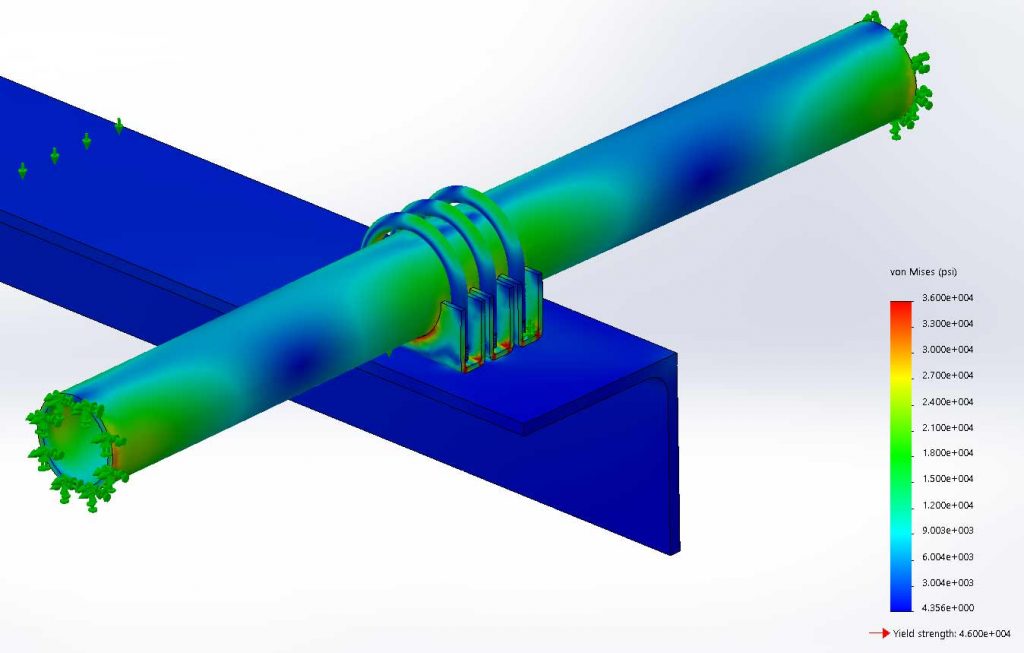Often, specific loading criteria is required depending on the industry and application of the item being investigated. Some examples of some of the most common load types that DH Glabe & Associates considers when performing a finite element analysis include gravity loads, hydrostatic pressure, wind pressure, seismic forces, vibration, and thermal effects.
The results of the finite element analysis can be displayed graphically. The stresses in each element are determined and a contour is developed that illustrates for the DHG engineers and our customers how the stress changes throughout the object. Changing colors represent different degrees of stress. Our engineers are able to simply interpret and communicate to our customers the results of the analysis. A finite element analysis adds increased confidence in the structural integrity and strength of the object to safely perform in the manner in which it was intended. Contact us today to learn how our FEA engineers can help you with your next project.








